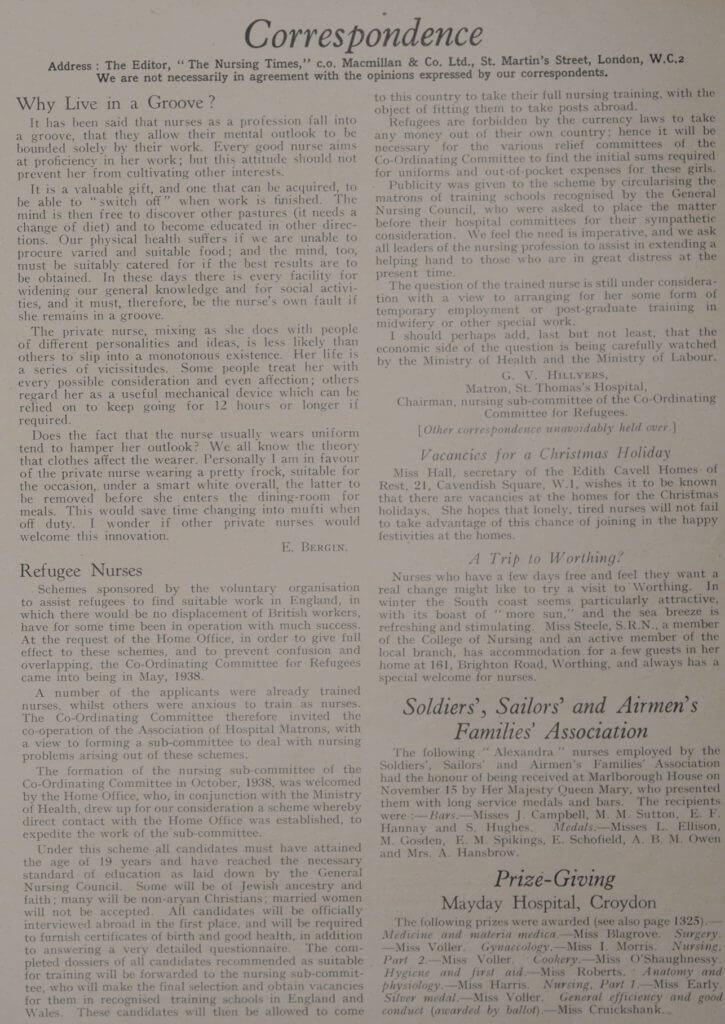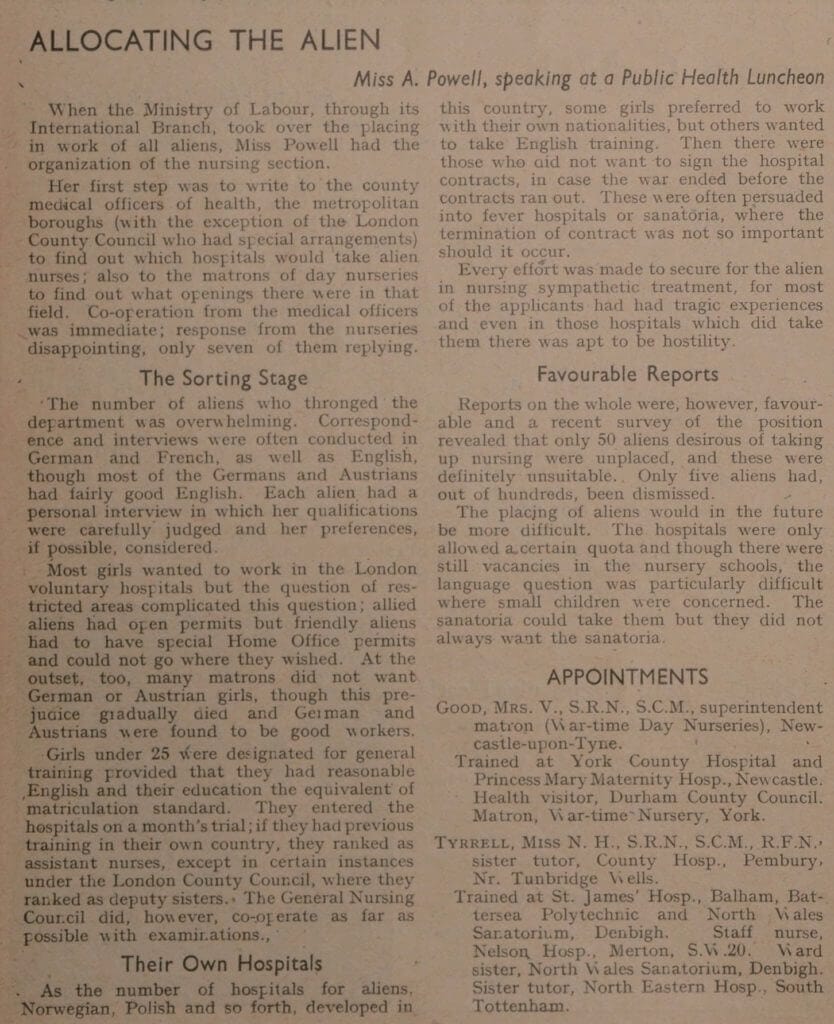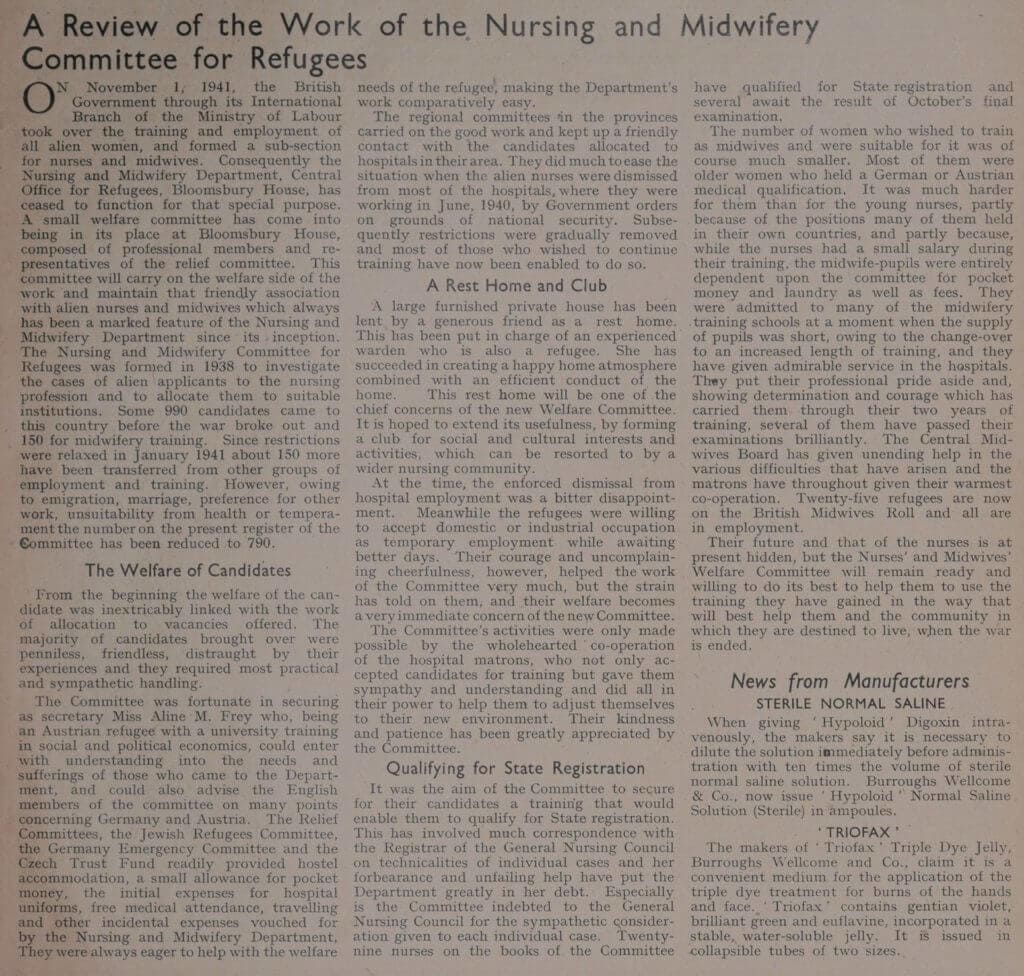|Dr Jane Brooks, Senior Lecturer at the University of Manchester (UK)|
The digitisation of Historic Nursing Journals by Gale has created a dynamic and valuable resource for historians of nursing in the UK and beyond. I have been working in the field of nursing history for over twenty years. In 2010, I began researching nursing in the Second World War. I predominantly work with personal testimony such as oral history, letters and diaries. However, as well as these source materials usually located in public archives, I have used multiple types of entries in nursing journals, most frequently Nursing Times. I live in Yorkshire, the Royal College of Nursing headquarters library is in London and the archives are in Edinburgh, so every time I wanted to conduct any research using Nursing Times I had to travel to review the hard copies. If I needed to check a reference, I again had to make a journey or request one of the very busy archive staff check for me.
Some nursing journals are in a fragile state
As the Second World War was so all encompassing, finding relevant and useful articles was relatively easy; Nursing Times published letters from nurses on active service overseas, articles on tropical diseases that nurses may face on active service, as well as how to care for casualties on the Home Front. The fragile state of the journals themselves, however, could be a limiting factor, impacting which ones I could search and which needed to be withheld from public use.
My current research: Jewish refugees who became nurses in Britain
My current research focuses on Jewish refugees who escaped Nazi Europe and became nurses in Britain, mostly from about 1938. Nursing was one of two escape routes for Jewish women and a better opportunity than the alternative – domestic service. Thus, some women arrived in England on specific nursing visas and some moved into nursing from domestic service when nursing became a vital role for the war effort. Nursing Times is a critical resource for this research. The journal printed requests for work by Jewish women seeking to escape. It published articles from key nurses, including Miss Hillyers, the Matron of St Thomas’s Hospital in London. Refugee nurses wrote in to voice their dismay when all alien nurses were dismissed from their nursing positions after the fall of France in spring 1940, which had raised concerns of spying.
![G. V. H. "The Problem of the Refugee Nurse." The Nightingale Fellowship Journal, vol. [3], no. [21], [May 1939]](https://review.gale.com/wp-content/uploads/2022/10/The-Problem-of-the-Refugee-Nurse-558x1024.jpg)

The journal then published letters and articles when alien nurses were allowed to return to hospital work, outlining the sorts of hospitals and patients they could care for.

The diversity of letters, articles and adverts from about 1938 to 1945 meant that each individual issue of Nursing Times had to be reviewed by hand. As letters were short and sometimes had rather esoteric titles, such as ‘Nursing the great humaniser’ and ‘Guests of our nation,’ they all needed to be read to ensure none were missed. As with the work for my Second World War project, some of the earlier copies of the journal itself were fragile and could not be used.
I can now complete research from home
The digitisation by Gale of the Historic Nursing Journals now means I can search and find articles, letters and adverts at home. I no longer need to make long and time-consuming journeys, pay for hotel rooms and take time away from work to conduct these aspects of my research. I can now search by key words to locate the most relevant work. Importantly, the journals themselves can be preserved away from public usage.
I have been given access to Gale’s digitised archive and have already located an article that I had not seen before. The article is a review of the Nursing and Midwifery Department attached to the Refugee Council at Bloomsbury House in London. The Department was headed by Miss Hillyers herself and supported Jewish refugees, providing access to nurse training in Britain. The letter, written on December 20, 1941, outlines the work of the Department and the support it was able to offer to refugee nurses. It is a fascinating insight into the help that some in the profession wished to offer these exiled women.

I am looking forward to using this resource in the future. I know it will make a huge difference to me and to all other researchers in the history of nursing. Gale and the Royal College of Nursing are to be commended on this valuable work.
If you enjoyed reading about the history of refugee nurses during the Second World War, you may like:
- Humanity and Courage: Refugees and the Memory of Those Who Saved Them
- How Important Was the Role of Women During WWII to the Victory of the Allied Powers?
- From coupons to cocktail dresses: tracking changes to women’s wartime fashion using the Picture Post
- Building a Digital Archive: The Role of Relevance and Research Trends in ‘Refugees, Relief and Resettlement’
- Building a Digital Archive: The Role of Privacy and Content Breadth in ‘Refugees, Relief and Resettlement’
If you want to find out more about the content in Women’s Studies Archive, try:
- Tracing the Young Women’s Christian Association through Women’s Studies Archive: Female Forerunners Worldwide
- Introducing Women’s Studies Archive: Voice and Vision
- The Author Gender Limiter Tool Brings Exciting Potential to the Study of Women’s Authorship and Digital Humanities
Blog post cover image citation: A montage of images from the Historic Nursing Journals collection found within Women’s Studies Archive: Female Forerunners Worldwide. All sources are from between the war years 1939-1945.

